In my previous post I mentioned I was knitting a sweater and a cardigan for a designer student and couldn't post photos of them.
They're finished, blocked, sent and accepted - but I can't publish photos of them for another few weeks. In short, both are fairly chunky, fisherman-style knitted with beautiful 4-ply wool from Harris.
Craving something light and airy I celebrated finishing them by casting on to make something completely different: reknitting "Haruni" by Emily Ross (Ravelry link). A couple of years ago I knitted it using Viva, a wool-silk blend; this time Rowan kidsilk haze, a mohair-silk blend.
Yesterday a colleague thought for a moment I was clutching a wig! :-)
Minor modifications (like last time):
Mina två beställningsarbeten som jag nämnde i förra inlägget är klara, ivägskickade och godkända - men jag kan inte publicera bilder på dem ännu.
Efter att ha stickat en tröja och en kofta i tjockt och ganska strävt (men mycket vackert) garn behövde jag något lätt, skirt och fluffigt som motvikt. Tre nystan Rowan kidsilk haze blev det, och jag håller på och stickar mönstret "Haruni" av Emily Ross för andra gången. Gårdagens höjdpunkt var en kollega som avslöjade att hon ett ögonblick tyckte att det såg ut som om jag satt och höll i en peruk!
They're finished, blocked, sent and accepted - but I can't publish photos of them for another few weeks. In short, both are fairly chunky, fisherman-style knitted with beautiful 4-ply wool from Harris.
Craving something light and airy I celebrated finishing them by casting on to make something completely different: reknitting "Haruni" by Emily Ross (Ravelry link). A couple of years ago I knitted it using Viva, a wool-silk blend; this time Rowan kidsilk haze, a mohair-silk blend.
Yesterday a colleague thought for a moment I was clutching a wig! :-)
Minor modifications (like last time):
- rows beginning and ending with stocking stitch (not garter stitch)
- stem in the middle three stitches wide (instead of one)
Mina två beställningsarbeten som jag nämnde i förra inlägget är klara, ivägskickade och godkända - men jag kan inte publicera bilder på dem ännu.
Efter att ha stickat en tröja och en kofta i tjockt och ganska strävt (men mycket vackert) garn behövde jag något lätt, skirt och fluffigt som motvikt. Tre nystan Rowan kidsilk haze blev det, och jag håller på och stickar mönstret "Haruni" av Emily Ross för andra gången. Gårdagens höjdpunkt var en kollega som avslöjade att hon ett ögonblick tyckte att det såg ut som om jag satt och höll i en peruk!

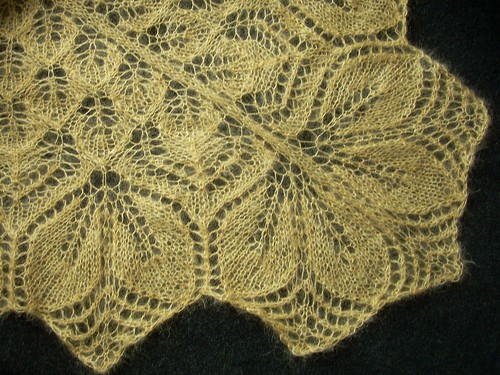



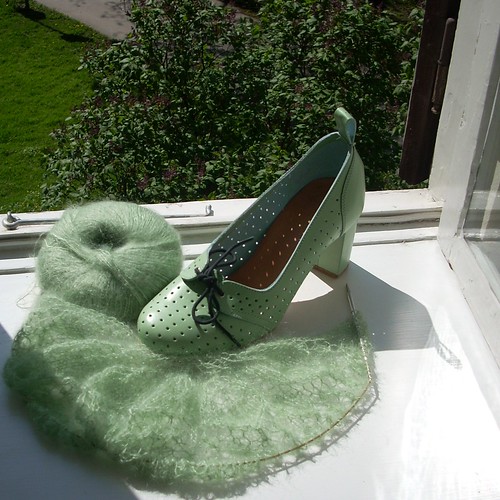

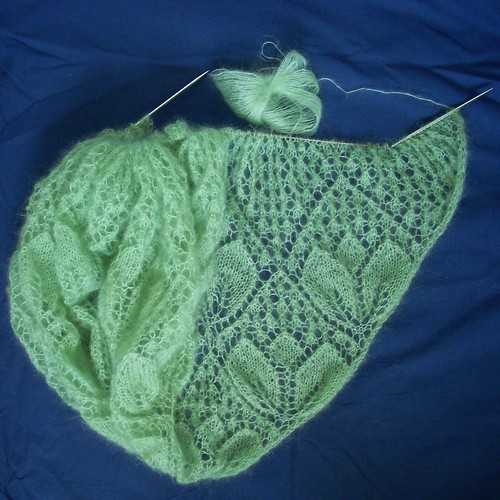

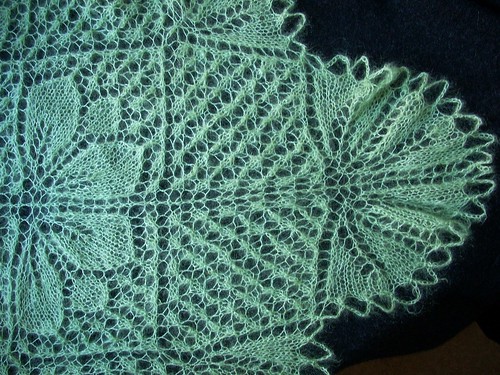








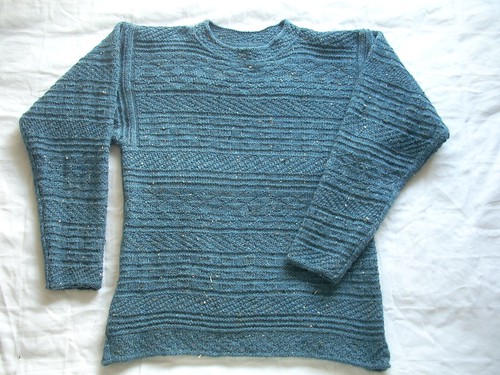





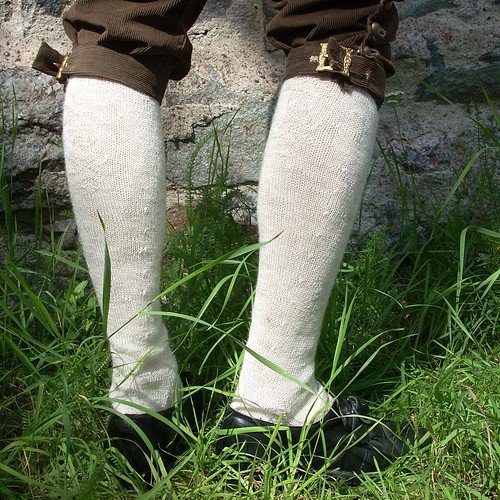

















.jpg)


